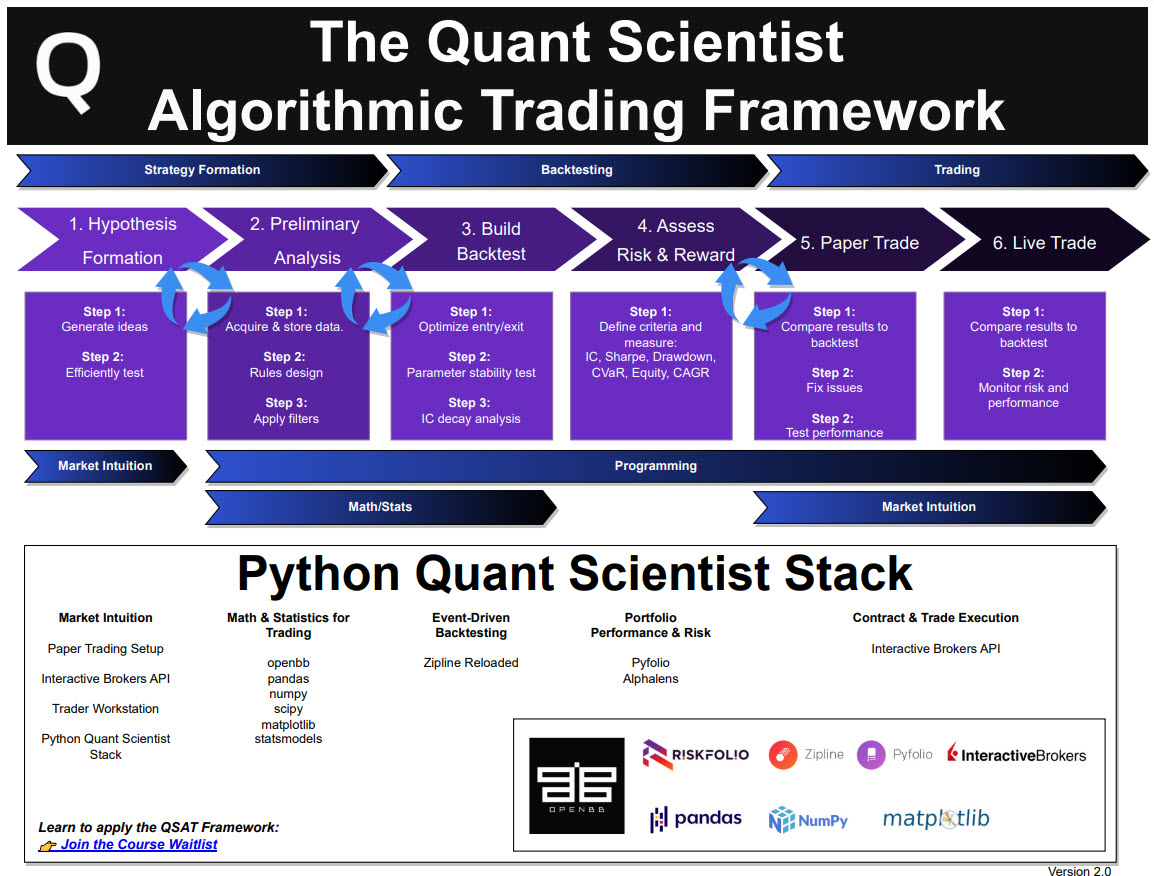Join the Quant Scientist Newsletter
Gain access to exclusive tools that Wall Street's Elite don't want you to have. Don't miss the next issue...
Join 11,500+ Quant Scientists learning one article at a time
Join 11,500+ Quant Scientists learning one article at a time

Algorithmic Trading Framework for Quants (6-Steps to Profitable Strategies)
Today, we are sharing one of the most important tools we use in the course. Our goal is to take you end-to-end process that we use to build and implement algorithmic trading strategies. And today, we are sharing a framework that covers exactly how:
The 6-steps to profitable algo trading strategies
The 3 skill all traders need (but few have)
The Python Quant Scientist Stack: The 10 Must-Know Python Libraries that are free (and will make you money)
BONUS: Download our framework for free (details below) 👇
Join the Quant Scientist Newsletter (and Get the Code)
Want exclusive access to our FULL codebase for this Quant Science tutorial plus dozens more? Then:
Free Video Tutorial
This post comes with an 8 minute video tutorial showcasing everything about this framework.
Introduction: A New Approach to Algorithmic Trading
Welcome back, everyone! I'm super excited to show you the second version of the Quant Scientist Algorithmic Trading Framework. At a high level, this framework steps you through strategy formation, backtesting, and live trading. However, there's a lot that goes into these steps, and we'll delve into those details.
The Quant Scientist Algo Trading Framework (Free Download)
Overview of the Framework
The framework seeks to do a couple of things. It's all about creating a strategy, backtesting that strategy, and trading that strategy. But there's more to it:
Strategy Formation: It involves coming up with the ideas, conducting preliminary analysis, building the backtest, and implementing feedback loops.
Iterative Process: Algorithmic trading is about iteration, speed, and testing. You'll see how the framework supports these crucial aspects.
Skills Required: We'll discuss the skills that a Quant scientist needs, including market intuition, programming experience, and math and stats background. Since this is a Python course, we will focus extensively on Python tools.
The Quant Scientist Stack: 6 Steps Plus Tools and Strategies
Step 1: Strategy Formation
The first step is strategy formation, where you'll create an idea or hypothesis to test. Idea generation can be based on your experience, market intuition, forums, digital communities, and more. It requires market intuition and forms the top of the funnel that leads you through the rest of the process.
Step 2: Preliminary Analysis
The second step is preliminary analysis, involving Python to store and acquire market data. This can be historic data or streaming real-time data, depending on your strategy. Simple rules like buy, sell, or do nothing are tested, and filters like the Kalman filter or Butterworth filter are applied to amplify your trading signal.
Step 3: Backtesting
From there, we get into backtesting. It's essential to avoid brute force optimization to prevent overfitting. Instead, focus on optimizing aspects built into the strategy, such as entry exit, stop loss, or market order. Check for the robustness of parameters and assess the risk and reward using metrics like drawdown and sharp ratios.
Step 4: Risk & Reward Assessment
The fourth step is to assess the risk and reward tradeoff. We'll help guide you on which metrics to use to help you proceed through to trading using profitable strategies. Such measures include IC, Sharpe, Drawdown, CVaR, and more.
Step 5: Paper Trading
Paper trading is an absolutely critical stage that helps you earn market intuition without risking money. Here, you'll compare paper trading results to your backtest, fix technical issues, test performance, and understand your risk metrics.
Step 6: Live Trading
Finally, after successfully paper trading, it's time to trade the strategy live. Monitoring and comparing risk and performance against the backtest are essential. This phase requires you to be alert and responsive to real-time conditions.
The Three Basic Skills of a Quant Scientist
Market Intuition: Understanding how the market moves, order fills, and the systems you use.
Programming: The main focus of our time, as you'll have to implement your ideas.
Math and Stats Background: Basic understanding of statistics and regressions; we're not talking about complex AI, just fundamental analytical skills.
Tools That Make Up the Python Quant Stack
To support our math, statistics, backtesting, and trade execution, we'll use tools like:
OpenBB terminal
pandas library
numpy
SciPy
matplotlib
statsmodels
Zipline Reloaded backtester
Alphalens
Pyfolio
Interactive Brokers API
These libraries are powerful and integral to the Quant Scientist Algorithmic Trading framework.
Conclusions: The Promise of Version Two
I hope you enjoyed learning about our algorithmic trading framework. This course is all about the Quant Scientist Algorithmic Trading Framework, and with this second version, you'll find more refined strategies and powerful tools. See you in the course!
Are you feeling lost when trying to learn Algorithmic Trading?
There's nothing worse than going at this alone--
❌ Learning Python is tough.
❌ Learning Trading is tough.
❌ Learning Math & Stats is tough.
It's no wonder why it's easy to feel lost.
And all of this increases the likelihood you will fail (not to mention lose money in the process). Protect your future.
👉 Join 800+ future Quant Scientists on our Python for Algorithmic Trading Course Waitlist: https://learn.quantscience.io/python-algorithmic-trading-course-waitlist
Start Your Journey To Becoming A Quant Today!
Join the Quant Scientist Newsletter
Gain access to exclusive tools that Wall Street's Elite don't want you to have. Don't miss the next issue...
Join 11,500+ Quant Scientists learning one article at a time
Join 11,500+ Quant Scientists learning one article at a time








